The “Horseshoe & Star” motif is seen on the bases of jelly glasses, packer jars & tumblers, the majority of which were probably made from around 1900 into the 1930s. (Sometimes the star is not present). These were likely made by a number of pressed glass tableware manufacturers of the period.
Typically, these containers might be described as “jelly glasses”, but in many cases they were more than likely sold containing prepared mustard, jam, soft cheese, horseradish, peanut butter or other food products.
Some examples have mold letters or numbers on them, such as one of the glasses illustrated here, embossed with the letter “P”. They sometimes have “knurling” encircling the diameter of the glass, with up to four separate bands or rings. (The knurling resembles the “reeded” or “milled” edge as seen on some types of coins, such as the United States quarter and dime).
These pieces were often saved and reused as juice glasses or small tumblers. They are sometimes found in old trash dumps of the early to mid 1900s. Sometimes they are found for sale in thrift shops or flea markets, being sold as small drinking glasses.
Because of their size, profile and strong similarity with the clear glass “catch cups” used with vintage “Arcade” brand and other coffee grinders, they have sometimes been described as “grinder cups” or “grinder glasses” although, from information published on this site (link following) they were likely not originally used for that purpose:
http://www.oldcoffeegrinders.com/replacement-parts.htm
ADVERTISEMENT
Glass manufacturers that reportedly produced these items with a horseshoe design on the base include: Indiana Tumbler & Goblet Company, Greentown, IN (1894-1903); Indiana Glass Company, Dunkirk, IN; Ball Bros. Glass Manufacturing Company, Muncie, IN (1888-1992); Fostoria Glass Company, Fostoria, OH (1887-1891) & Moundsville, WV (1891-1986); Monongah Glass Company, Fairmont, WV (1903-c.1929); and Hazel-Atlas Glass Company, Washington, PA, Wheeling, WV & other plant locations (1902-1964).
Cambridge Glass Company, Cambridge, Ohio (1902-1959) is confirmed to have made these glasses in quantity as they are pictured in several of their early catalogs, including those published in 1906 and 1911. However, there is no surefire way to be certain any particular example is a product of that particular glass manufacturer. Many of the molds used in the early years at Cambridge were actually older molds first used by other companies in the National Glass Company “combine”. (Thanks to Mark A. Nye for permission to include cuts from Cambridge catalogs on this page, and also thanks to Carol Roop for her help with research on these glasses).

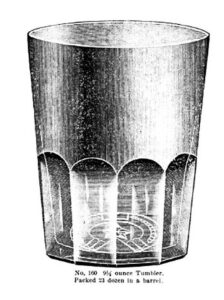

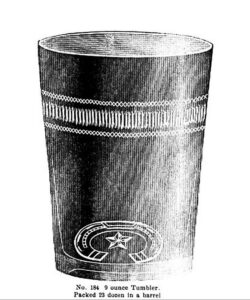
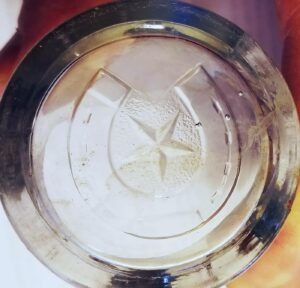
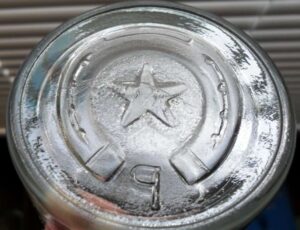
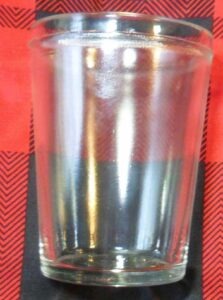
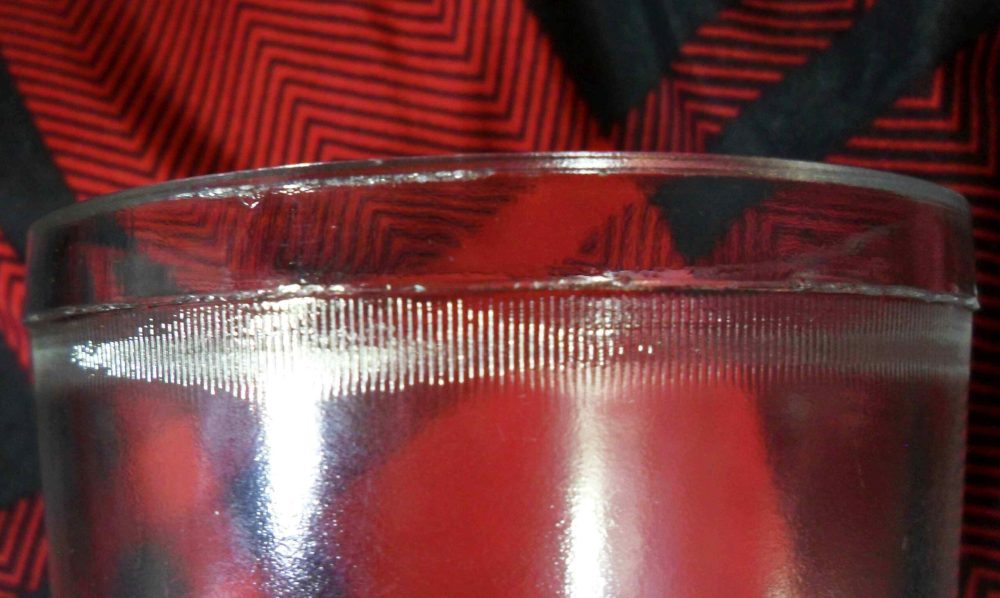
Other small glasses of somewhat similar shape (but not with a horseshoe on the bottom) are found with such marks as those of Hazel-Atlas Glass Company and Capstan Glass Company, among other makers.
For an extensive list of glass manufacturers’ marks seen on bottles, fruit jars, insulators, tableware and other items, please click here to go to the alphabetical list of GLASS BOTTLE MARKS (page one).
Here is my website HOME PAGE.
ADVERTISEMENT

